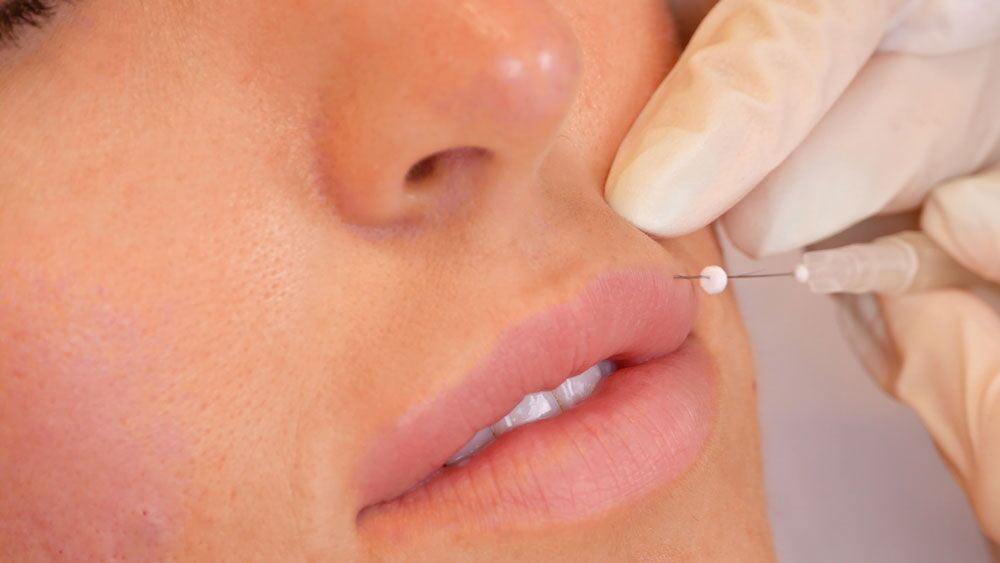Lip filler is one of my favorite treatments because small, precise changes can make a big difference in how you feel when you smile. Some patients want a soft, hydrated look; others want more shape or obvious volume. My job is to match the plan to your anatomy and your taste—not a trend.
What is Lip Filler?
Lip fillers are tiny injections of hyaluronic acid (HA)—a water-loving gel your body already knows—that add volume, shape, and hydration to your lips. HA attracts water and holds it in place, which is why lips look smoother, softer, and a bit plumper after treatment. We can also use it to soften lip lines and fine-tune symmetry.
What I use: HA fillers from families like Juvéderm (Ultra, Ultra Plus, Volbella), and Restylane (Kysse, Defyne/Refyne). Each has a different feel and lift, so I match the product to your lip tissue and goals.
How I Choose a Product for Your Lips
Every filler has a personality—some build structure, some plump, some smooth lip lines and add hydration. I match the product to the job:
- Volume + structure: I often reach for Juvéderm Ultra XC.
- Fuller, faster plump: Juvéderm Ultra Plus or Restylane Defyne can deliver more lift.
- Fine lines / subtle hydration: Volbella lands soft and flexible for vertical lip lines or “barely there” changes.
Brand is secondary to fit. I’m looking at your lip tissue thickness, elasticity, vermilion border, Cupid’s bow, and how your lips move when you talk and smile.
Styles: “Kylie” vs Subtle (And Why We Build in Layers)
You can absolutely ask for very natural or noticeably fuller. What changes is the pace:
- I don’t dump multiple syringes into lips at once. It’s not safe or smart.
- We typically add up to 1 mL per session, reassess at 2 weeks, and, if you’re going bigger, stage additional syringes 4–6 weeks apart.
- This staged approach keeps lips soft, avoids migration, and gives you control over the endpoint.
What to Expect on Treatment Day
After we have discussed which filler is right for you, we will prepare you for your injection.
- Numbing: I use a topical anesthetic for ~10 minutes. The filler itself contains lidocaine, so comfort improves as we go.
- Technique: I place tiny amounts where they’ll make the most difference (border, body, columns), using a needle or cannula depending on your anatomy.
- Sensation: Pressure and quick pinches. Most people rate it as “not fun but very tolerable.”
- Amount: Up to 1 mL for a first session is typical.
Lip Filler Aftercare
- Aquaphor or Vaseline: Yes, a thin layer as needed if lips feel dry.
- Straws / heavy puckering: Avoid 24–48 hours.
- Lipstick/gloss: Skip 24 hours, then use clean products.
- Exercise, sauna, hot yoga: Avoid 24 hours to keep swelling down.
- Alcohol + salty/spicy foods: Skip the first night; both can worsen swelling.
- Sleep: Head slightly elevated the first night.
- Icing: 10 minutes on / 10 off during day one helps.
- Massage: Don’t unless I’ve shown you how. Over-massaging can move product.
- Medication notes: NSAIDs (ibuprofen/aspirin) can increase bruising. Only use if your own clinician says it’s okay. Do not stop prescribed meds without guidance.
- Cold sores: If you’re prone to them, tell me. We can discuss antiviral prevention.
Bruising: Plan Like It Might Happen
Lips are vascular. Some people don’t bruise at all; others do every time. There are certain measures that you can take which will reduce your risk of bruising. These include avoiding NSAIDs or blood thinners for about 5 days prior to injections. Common NSAIDs and blood thinners include Aspirin, Advil, Ibuprofen, Fish Oil and alcohol. Some patients find that taking Arnica tablets for 2 days prior to injections and eating pineapple the day before injections help with bruising as well. If you do bruise, it will typically resolve within 2 weeks and can be disguised by lipstick.
Lip Filler FAQs
Lip filler swelling stages — what’s normal?
0–24 hrs: peak swelling. Days 1–3: swelling/bruising can make lips look uneven. Days 4–7: softening. ~2 weeks: settled result. Call urgently for severe pain or skin color changes.
How long does lip filler last?
Most hyaluronic-acid lip fillers last 6–12 months. First-timers sometimes metabolize a bit faster. We reassess at two weeks and plan refreshes around 9–12 months.
Lip filler aftercare: what should I avoid?
Thin layer of Aquaphor/Vaseline is fine. Skip heavy puckering/strong suction and straws for 24–48 hrs. No lipstick for 24 hrs. Hold exercise/hot yoga/sauna 24 hrs. Avoid alcohol/salty or spicy foods the first night.
Does lip filler hurt?
You’ll feel pressure and quick pinches. I numb for ~10 minutes and most fillers include lidocaine, so comfort improves as we go.
Lip flip vs lip filler — what’s the difference?
A lip flip relaxes the upper lip so it rolls out slightly (no volume). Lip filler adds real volume/shape and lasts longer. Many people combine both for definition plus softness.
What is lip filler made of?
The fillers I use are hyaluronic acid (HA) gels—materials your body already recognizes and gradually metabolizes.
WHAT NEXT?
I hope you have found this information helpful! I offer consultations, which can be scheduled by calling (804) 775-4559. I am so excited to get to know you and help you meet your aesthetic goals!
